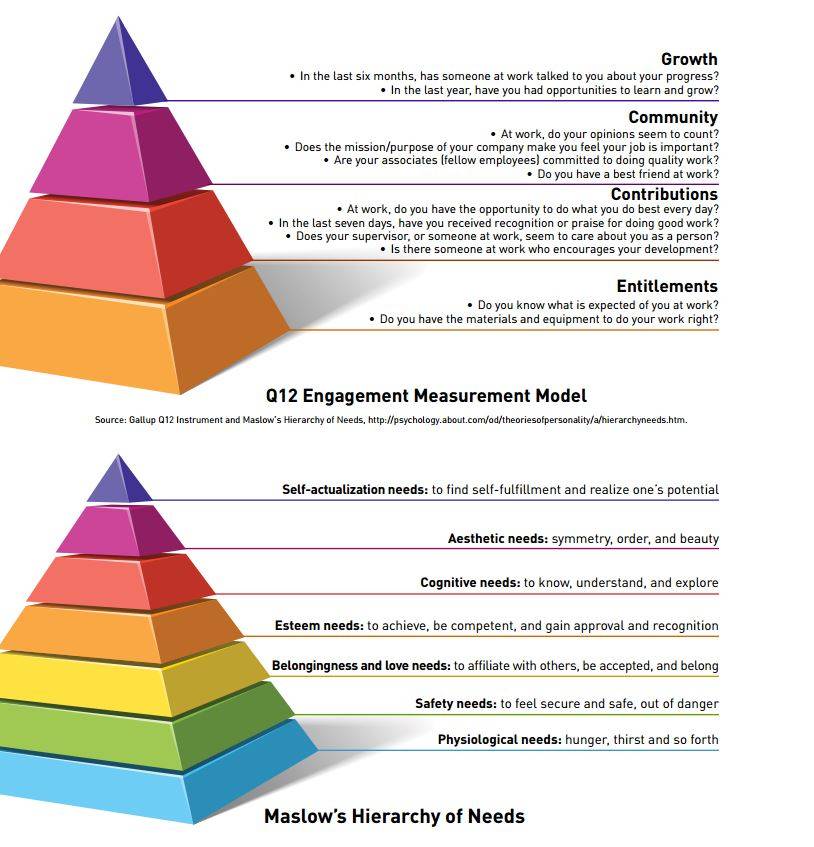A recent Gallup survey reported that less than one-third of U.S. employees are actively engaged in their jobs. What does that mean? That two-thirds of the workforce is, as Gallup called it, “sleep walking through their day.” Each disengaged employee costs a company, on average, over $2200/year in addition to turnover costs. Add in the impact on morale, and we can quickly see the effect it can have on a business.
According to ADP, employee engagement is a measurement of an employee’s emotional commitment to an organization.
Before we can talk about how to increase engagement, we need to understand a bit about the psychology of human motivation. Employees are people, and they have needs. Abraham Maslow proposed that there are 5 different levels of needs. Once an individual’s needs have been fulfilled at one level, they then naturally progress to the next. If that is the case, if an employee’s most basic of needs are not met, they will not reach the ultimate goal of self-actualization, or in the workplace, that growth level (as depicted by the image from ADP below).

Daniel Pink, author of Drive, shares in his book and TED talk how extrinsic rewards, such as money, do not alone successfully motivate an individual. As we have seen recently, Holacracy, the self-management system Zappos uses (and one Google tried for a short period), has struggled to prove effective. This form of organization that removes tiered hierarchy, and where the organizational structure is constantly evolving, triggered 14% of the Zappos staff to leave within weeks of implementing.
So what does work?
In his interview with Simon Sinek, Bob Chapman, the Chief Executive of Barry Wehmiller and co-author of Everybody Matters, talks about the positive workplace culture they’ve built at Barry Wehmiller and how they’ve purposefully put people first. The statements are simple; addressing the most basic of needs, up to those higher cognitive and self-actualization ones. Most importantly, their actions have followed their words.
Everyone wants to do better. TRUST THEM.
Leaders are everywhere. FIND THEM.
People achieve good things, big and small, every day. CELEBRATE THEM.
Some people wish things were different. LISTEN TO THEM.
Everybody matters. SHOW THEM.
With some basic understanding of what we need to motivate and engage employees, how do we now go ahead and implement a process to successfully begin to change company culture and increase engagement? As Deloitte has identified in these 3 key principles, leadership is key.
- Leadership: company leaders drive change and should be held accountable
- Process and Policies: should align with the company’s values, vision and mission
- Results: should be measured and shared
Are you successfully engaging your employees? What have you found to work…or not work? We’d love to hear your thoughts and stories.
